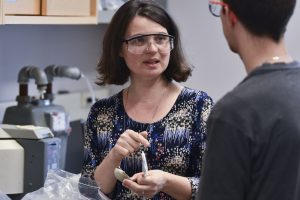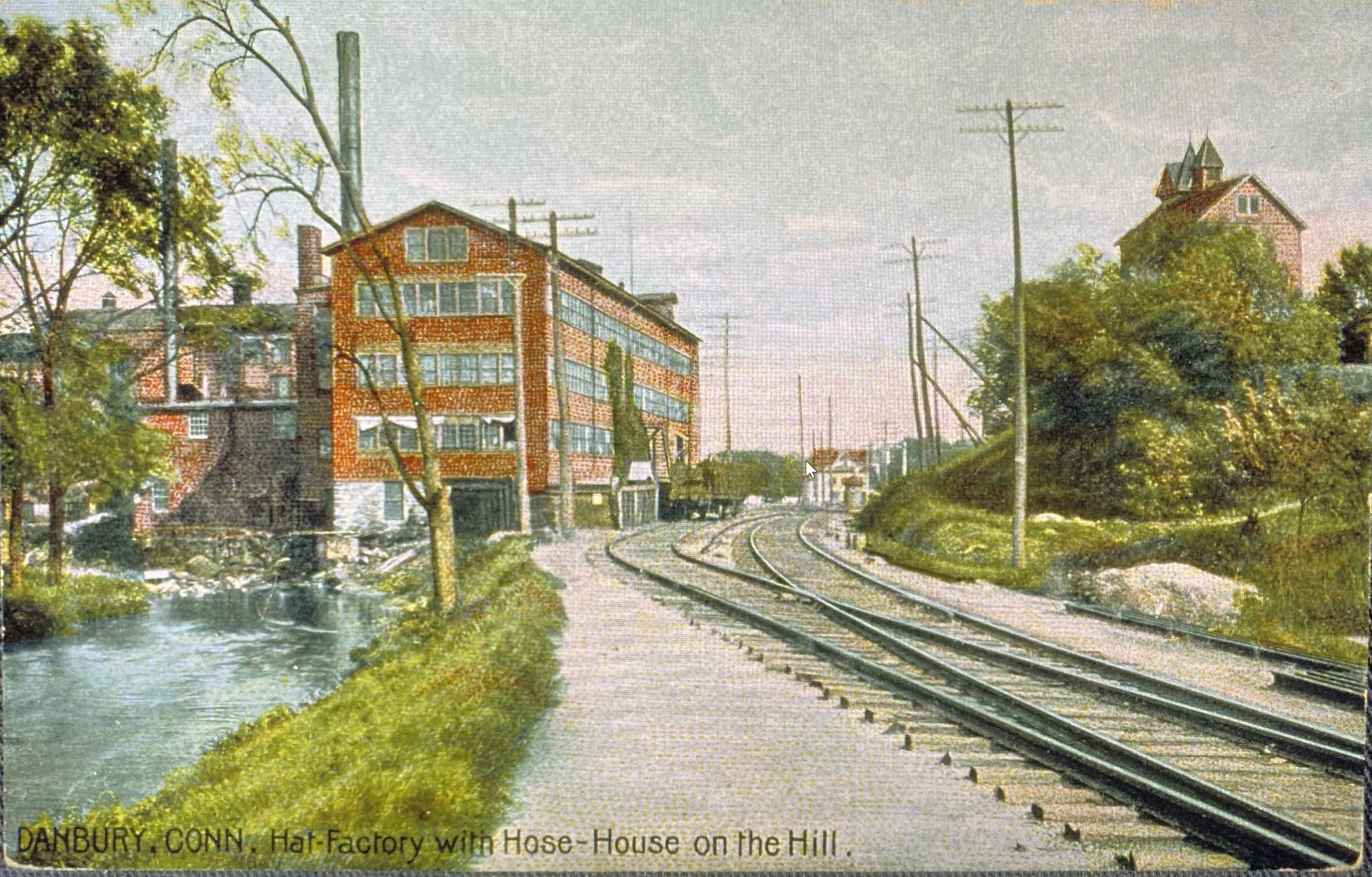Western Connecticut is known for rolling hills, rich history, and industry, such as hat making. Once called the “Hat City of the World,” Danbury thrived. Anyone familiar with Lewis Carroll’s Mad Hatter may also be aware of the dangers of hat making, due to the industry’s use of the potent toxin mercury. Starting in the late 1700s, Danbury hat factories were a point source of pollution, dumping large quantities of mercury into the nearby Still River.
Fashions change, the use of mercury in hat making was outlawed in 1940, and now all that remains of the once-thriving hatting industry in Danbury is its history – or is it?
A group of researchers from UConn and Wesleyan University spent four years studying a stretch of the Still River, and found that the industrial waste of a century ago is still very much present in 2020.
Kayla Anatone ’12 (CAHNR), a current PhD student at Wesleyan University, was interested in the local history but also in learning if “legacy” mercury was impacting the environment and making its way into the food web. She and co-authors from the UConn Marine Sciences department – including PhD student Gunnar Hansen, Professor Robert Mason, Assistant Research Professor Zofia Baumann and Wesleyan University Professor Barry Chernoff – recently published the findings in Chemosphere.
Baumann says there have been studies performed to measure some aspects of mercury pollution in the river, however the data has not been summarized in a systematic way, and this study is the first comprehensive investigation of the Still River.
Baumann explains that mercury is a global pollutant, with multiple sources. Though the element is naturally occurring at low levels, mercury emissions have tripled since the industrial revolution, when mercury-enriched coal and other fossil fuels were used to power industry. Mercury can be used in various processes and products, from filling thermometers to filling cavities in teeth, but in the case of hat making it was used to soften the felt to make it more pliable for shaping.

To make the tracing of mercury through the environment even more complex, Anatone explains mercury can exist in numerous compounds and in either inorganic or organic forms. If mercury is in an inorganic form it does not move as easily through the food web. However some bacteria can convert the mercury to organic molecules, making them more “bioavailable” and readily enter the food web.
“The organic forms are the forms we are most concerned about, because organic mercury can accumulate in organisms such as humans and wildlife, and cause detrimental effects such as neurological damage,” says Anatone.
The researchers performed the studies by sampling water, sediments, and tissues from a fish called the Eastern Blacknose Dace from seven sites on the river over the course of four years. Some of the sample sites were taken at former factory sites and some were reference sites for comparison. The results were staggering.
“The Still River watershed has significantly high levels of mercury in the fish no matter where the fish are from along the river,” says Anatone. “Fish muscle tissue from six out of seven of the sites had concentrations that exceed EPA guidance levels for weekly mercury consumption. That was especially surprising because the fish are only about three inches in size and for them to be accumulating so much mercury, I just didn’t expect it.”
Anatone explains that they also found very high amounts of mercury persisting in the sediments: “All of the Still River sites which previously had hatting factories and direct point source pollution have concentrations in the sediment that exceeded the background levels of mercury found in sediments in other Connecticut sites.”
Baumann says one aspect of the study is somewhat unexpected: “One of the really interesting findings in this study was that despite the very high concentrations of mercury in the sediments, at least it is my feeling based on the data that we have, is that a lot of the mercury is not bioavailable. Around one percent is available for further uptake in the food web, and that is what we are worried about essentially. Even though it is a pretty low percentage, it is impressive to see that it resulted in such high levels of bioaccumulation in the fish.”
Anatone and Baumann hope that this research will inspire conversations and action.
“Research like this is the only way to find out how things are really moving in the ecosystem,” says Baumann. “These studies are what you can use to inform decision-makers. Do we need to remediate? Should we let it be? Should we warn people who angle there regularly? This info is really needed.”
Anatone says at the very least, it is important to set fishing guidelines for these areas: “We studied Eastern Blacknose Dace. Humans don’t eat dace but humans eat trout and trout eat the dace. I think it is important that guidelines for fishing are put into place, like catch and release, or these areas are made off-limits for fishing.”
Though Anatone will be graduating shortly and will not be doing any further sampling, she is hopeful this research will motivate others to continue to study the Still River and the impacts of legacy mercury on the ecosystem and food web.
“This research is not simple, it takes a lot of effort and time. It would be interesting to carry on this work and measure in other organisms such as trout.”
Baumann adds that the river presents a unique system for studying how mercury cycles through New England streams, especially now with the changing climate, this work is important: “We want people to get curious about this.”



